11 tips for cycling in the rain: essentials for riding out the wet weather
Riding in the rain is part of life on two wheels - no matter the time of year. Here's how to survive, and maybe even enjoy it...
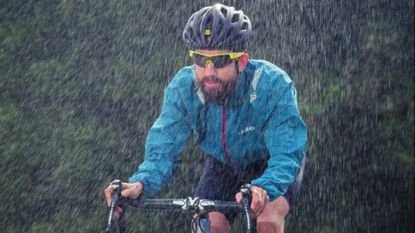
- 1. Invest in a good waterproof jacket
- 2. Keep splash off with mudguards or fenders
- 3. Wear overshoes and gloves
- 4. Use chain degreaser
- 5. Wear a cycling cap
- 6. Avoid standing water
- 7. Check your tires and reduce the pressure
- 8. Utilise plastic bags
- 9. Use lights
- 10. Just get on the turbo
- 11. Don’t always hide from the rain

Cycling in the rain is rarely a pastime riders will list as a favourite. But regardless if you're doing it because the rain started unexpectedly, because it was raining during commute time and you just had to get to work, or because the training programme said that's what you had to do - we all find ourselves riding in downpour at some point.
Though wet rides aren't usually something we look forward to, we can certainly take steps to make them more enjoyable - and lessen any negative impact they might have.
Here are a few tips to keep you comfy in the wet…
11 top tips for cycling in the rain
1. Invest in a good waterproof jacket
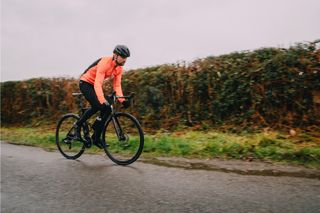
The most important item of clothing for battling the rain is a jacket. Not only will one of the best waterproof cycling jackets keep your torso dry it will help you regulate your body temperature. Gore-Tex is the best material as it is waterproof and breathable. A breathable material is essential so you don't overheat.
A thinner rain jacket or 'shell' can also be used with the correct layers underneath, although persistent or very heavy rain will get through eventually.
2. Keep splash off with mudguards or fenders
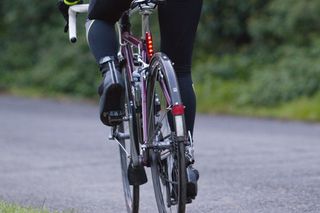
They may not look great, and they may rattle, but they are essential. The best bike mudguards for road bikes will keep all that filthy water on the road off of your feet, lower legs and back (where un-guarded wheels will spray the water with carefree abandon).
Even if you miss the rain, the roads will remain wet. That (dirty) water then gets flicked up by the wheels and makes you wet and cold. A flap added to the front guard will give you even greater protection.
Get The Leadout Newsletter
The latest race content, interviews, features, reviews and expert buying guides, direct to your inbox!
3. Wear overshoes and gloves
Your extremities are the first parts of your body to be sacrificed in order to maintain a core temperature, and when your hands and feet get wet and cold you will feel disproportionally uncomfortable.
The best water resistant cycling overshoes are worth their weight in gold while gloves are a little harder to get right.
The best winter cycling gloves will protect you without being so thick as to hamper your bike control as you still need to be able to feel the brakes and gears through all that material. However, many brands produce neoprene gloves which keep rain out and allow you to maintain dexterity.
4. Use chain degreaser
After a ride in the rain you should immediately shower and dry yourself. The same goes for your chain.
Cover it in degreaser (WD40 or GT85 are both widely available although there are bike specific degreasers like Muc Off) then vigorously wipe it down with a rag until it's dry. A few drops of lube will then protect it for the next ride. Do this and it can double the chain's lifespan.
It's a good idea to spray the other metallic moving parts too; front and rear gear mechanisms and brake callipers. Try to keep the degreaser away from the hubs, bottom bracket, wheel rims and brake blocks. Ideally your whole bike would get washed down after a wet ride. Although we know that's not very realistic, cleaning your bike properly can be done in just a handful of minutes – once you have a clear idea of the procedure and the right equipment - check out our how-to on cleaning your bike.
5. Wear a cycling cap
Air vents in helmets are great in the heat, not so much in the rain. A cheap cycling cap worn under your helmet is a good barrier for your head, with the peak giving extra protection for your eyes against the spray.
Other options include a skull cap (although they don't have peaks) or an aero helmet as many of them have plastic covers or fewer vents.
6. Avoid standing water
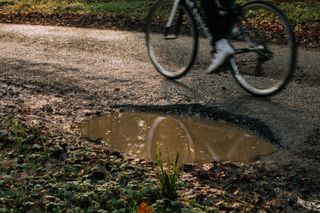
Steer clear of it. Standing water not only gets you wet, it can be incredibly dangerous as you never know what's lurking beneath. It might just be a puddle, but then it could be a wheel smashing pothole.
When you see standing water, check over your shoulder before moving safely out to 'ride the lane' (most standing water will gather near the kerb). Only ride through standing water if you can clearly see what's underneath.
7. Check your tires and reduce the pressure
Fixing a bike puncture on the side of the road isn’t fun at the best of times, but when it’s raining sideways it’s even worse.
Rain water washes all sorts of muck onto the roads, and when your tires are wet they pick up more of it than usual.
After each ride take a quick look over your tires checking for flints, glass and other debris. Also check for cuts in the tire that could weaken the carcass or allow the inner tube to bulge through.
It's a good idea to ride a heavier tire in the winter with a thick tread - check out our guide to the best winter tires for road cycling here to find those that strike the best compromise between rolling resistance, weight, and puncture protection.
Why not try a 28c or 30c tire run a slightly lower pressure too.
Running your rubber at a slightly lower pressure - by 5 to 10 psi - increases your surface area, and thus grip on the road as well as comfort. Find out more on how to find the right road bike tire pressure here.
8. Utilise plastic bags
If you're riding in very heavy or constant rain there is almost nothing that will keep your feet dry as water runs down your legs or gets in from underneath.
A cheap option to prolong that nice dry feeling in your feet is to slip a plastic bag over your socks, then your tights (if wearing them) pulled down over the bags, then finally your shoes and overshoes. A more permanent, less budget version is the Sealskinz Waterproof All Weather Ankle Length socks that do a good job of protecting your feet
9. Use lights
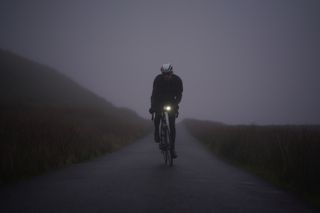
The best bike lights are essential if you're planning to ride after dark or before daybreak or if you're out in poor conditions during the day.
Whether it's the droplets of water on wing mirrors or a steamed-up windscreen, driving standards drop drastically in the rain. It is well worth making yourself more visible when it's raining, even in the middle of the day.
There are plenty of good quality, lightweight, LED lights that can be discreetly clipped to your bike. If riding at night, lights that meet legal requirements are needed anyway. Flashing LEDs are a good addition.
10. Just get on the turbo
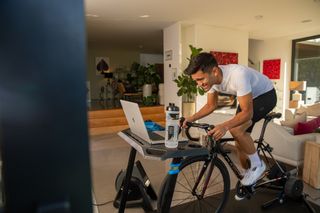
This isn't so much as dealing with the rain as avoiding it. Structured cycling workouts indoors on a turbo trainer are easy to follow and are a great way of building fitness, and there’s a host of indoor cycling training apps out there, such as Zwift and Wahoo X (the brand’s SYSTM training software and virtual cycling app RGT bundled together), that can make it fun too.
With short and punchy HIIT workouts being as short as 30 minutes, you can build and maintain your fitness even when you don’t want to head outdoors into the miserable.
11. Don’t always hide from the rain
So, we’ve run through the essential gear for making wet weather rides a much more pleasant experience. Sometimes the rain is unavoidable and therefore it’s also worth remembering that honing your wet weather riding skills is important so that when you do have to use them you’re well practised.
If your goal of the year is to complete your first 100 mile ride in a pre-booked sportive, it may be raining on the day, and so you’re going to want to feel comfortable riding in the conditions that present themselves.
Cornering safely on a road bike is an essential skill for all cyclists, and when it comes to cornering in the rain you’ll want to be a little bit gentler with your speed and your braking, and approach bends less aggressively, so not as much leaning into the corner.

Thank you for reading 20 articles this month* Join now for unlimited access
Enjoy your first month for just £1 / $1 / €1
*Read 5 free articles per month without a subscription

Join now for unlimited access
Try first month for just £1 / $1 / €1

Editor of Cycling Weekly magazine, Simon has been working at the title since 2001. He fell in love with cycling 1989 when watching the Tour de France on Channel 4, started racing in 1995 and in 2000 he spent one season racing in Belgium. During his time at CW (and Cycle Sport magazine) he has written product reviews, fitness features, pro interviews, race coverage and news. He has covered the Tour de France more times than he can remember along with two Olympic Games and many other international and UK domestic races. He became the 130-year-old magazine's 13th editor in 2015.
-
 Nightmares, niceties and gnarl: 10 years of the Transcontinental Race
Nightmares, niceties and gnarl: 10 years of the Transcontinental RaceThe ultra-distance benchmark that pits riders against a 4,000km self-supported Europe-wide trek reaches double figures
By James Shrubsall Published
-
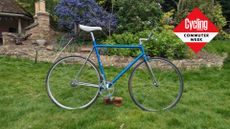 Why the best commute will always be aboard my old steel fixie
Why the best commute will always be aboard my old steel fixieCharming, simple, and always a great workout, this is the perfect town bike
By Joe Baker Published